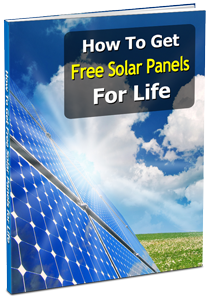Interest in solar power is really heating up these days. It has a huge potential to provide us with a cleaner, renewable form of green energy. With some challenges still in it’s path, like cost per kWh(kilowatt hour) compared to traditional grid power and it’s intermittent power producing capabilities(cloudy days), solar energy has come a long way since it’s invention over 100 years ago…

Vanguard I Solar Powered satellite: Not much bigger than a softball. State of the art technology in 1958!
Gold plated power?
Solar power is the act of converting sunlight to electricity. In the 1880’s, Charles Fritts attempted to create the first solar cell by coating a selenium semiconductor with a thin layer of gold. His experiment was a success, but it lacked power efficiency and the cost to produce just a single solar cell was extremely expensive. This first successful experiment, inspired others to research and develop more efficient solar cells that could be used to create today’s solar panels.
What are solar cells and how does solar power work?
Solar panels, which are also called photovoltaic(PV) panels, is the collection of photovoltaic cells that are packaged and assembled altogether. (When discussing solar energy, the word photovoltaic and solar are sometimes used synonymously). Solar panels are usually a part of a general solar energy system that requires more than one panel for sufficient energy production. The solar panel utilizes photons provided by the sun to generate electricity. The electricity is generated through the photovoltaic effect. The photovoltaic effect is the process of creating electric or voltage from the exposure of a material to light.
Most solar panels are made of certain semiconductors. The semiconductors are made of either silicon or cadmium telluride based thin-film cells or wafer-based crystalline silicon cells. These cells are electrically tethered to each other and the rest of the system. The wires that transfer the currents from these cells are made of copper, silver or a non-magnetic conductive transfer metal material.
When light hits the cells, a portion of that that light is absorbed by the semiconductor’s material. Once this occurs, electrons become loose and are allowed to flow freely. The electric field within the photovoltaic cells forces the freed electrons to flow in a certain direction and this creates a current of electricity.

The Vanguard I satellite was the first solar powered spacecraft to orbit the Earth in 1958
Solar Powered Space Race
Despite the high costs of the first solar cells. Governments around the world saw the potential for solar power in military and space applications. They spent millions of dollars to research and develop solar panels that could be used in remote areas that lacked a power grid. The space race between the US and the USSR, fueled the need for remote power generation as they both pushed to one up each other for their goal to launch more satellites and people into space.
The year of 1958 marks the first use of solar panels in space. The solar panels were on the Vanguard I, a satellite that was launched by the United States. These panels were used to supply power throughout the satellite. Providing power for the sensors, heating and cooling, telemetry and for the spacecraft’s propulsion, as well.
Solar power building boom!
In recent years, solar panels have become increasingly popular with homeowners, business owners and the general public. Government incentives for solar panels including rebates and tax credits, have created a building boom for solar arrays in the U.S. and in various parts of the world. The price per kWh(kilowatt hour) provided by solar panels has now significantly come close to the power that is generated by traditional grid power, making it an even more attractive power generation option.

Incentives & efficiency gains is making solar energy much more affordable for homeowners and businesses
Additionally, there is a ground swell of interest from people and businesses that want to save energy and live a more sustainable, eco friendly and green life. Solar power is certainly a green technology that is gaining in popularity. With the incentive programs available in certain areas, you just might be able to get your solar panels installed for free. Check your area for available programs by going to the Database for State Incentives for Renewables & Efficiency website.
Are you interested in working in the Solar industry? We’re sure you never thought about this way to get into the field. Click here to read this fascinating article.

You’ve mentioned government incentives and how the popularity amongst homeowners and businesses has really increased, but I’m still really hoping the spread of solar energy and the benefits increases a bit more.
I don’t know why, since solar energy has become cost effective, people are still hesitant about it, or haven’t even heard of it. Blows my mind.
It will take time for the technology to improve it’s efficiency so that the cost per kWh gets closer to traditional energy generation. Our thoughts are that energy efficiency combined with alternative energy technology, like Solar, Wind, Geothermal, etc is the real promise for true energy independence. Right now, without the incentives, the cost would be prohibitive to most home owners and businesses. What do you think?